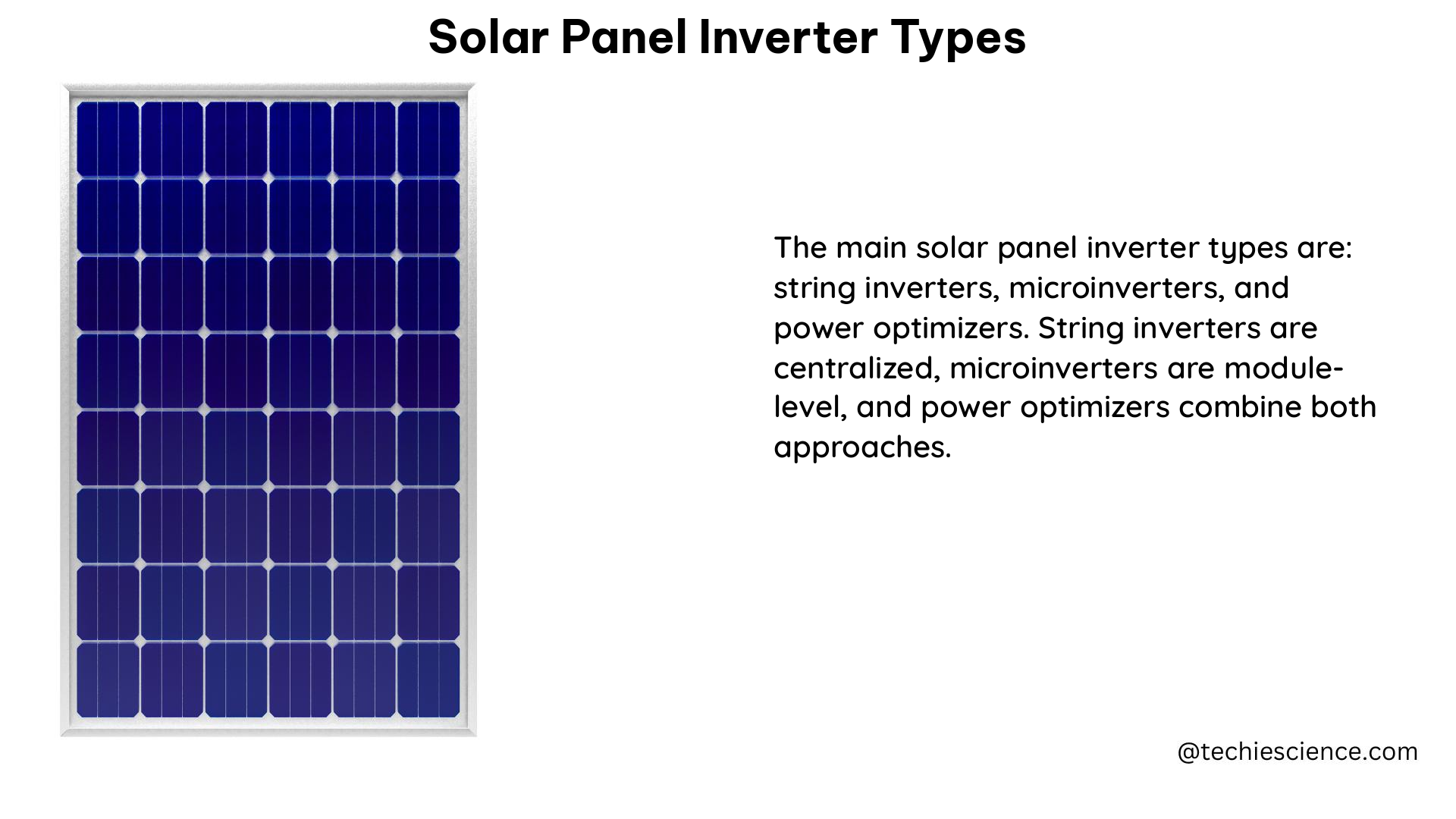Solar panel inverters are the unsung heroes of the solar power revolution, converting the direct current (DC) generated by solar panels into the alternating current (AC) that powers our homes and businesses. With a wide range of inverter types, each with its own unique features and technical specifications, navigating the solar inverter landscape can be a daunting task. In this comprehensive guide, we’ll delve into the intricacies of the four primary solar panel inverter types, equipping you with the knowledge to make an informed decision for your solar power system.
String Inverters: The Workhorse of Solar Power
String inverters are the most widely used solar inverters, found in both residential and small commercial installations. These inverters convert the DC output from multiple solar panels connected in series into usable AC power. String inverters boast an impressive efficiency of around 96-98%, making them a cost-effective and reliable choice. However, their performance can be hindered by shading issues, and they lack the module-level monitoring capabilities of their more advanced counterparts.
Technical Specifications:
– Typical power range: 2.5 kW to 12 kW
– Maximum efficiency: Up to 98.5%
– Weighted efficiency (CEC): 96-97.5%
– Voltage range: 200-600 VDC
– Frequency: 50/60 Hz
– Cooling mechanism: Passive or active cooling
Microinverters: Maximizing Efficiency at the Panel Level

Unlike string inverters, microinverters are installed at each individual solar panel, converting the DC power to AC at the panel level. This approach offers several advantages, including module-level monitoring and maximum power point tracking (MPPT), which can improve system efficiency and mitigate the impact of shading. However, microinverters tend to be more expensive and less reliable than their string counterparts.
Technical Specifications:
– Typical power range: 250-400 W
– Maximum efficiency: Up to 97%
– Weighted efficiency (CEC): 95-96.5%
– Voltage range: 16-60 VDC
– Frequency: 50/60 Hz
– Cooling mechanism: Passive or active cooling
Power Optimizers: Bridging the Gap between String and Microinverters
Power optimizers offer a hybrid solution, combining the cost-effectiveness and reliability of string inverters with the efficiency boost and panel-level monitoring of microinverters. These devices are installed at each solar panel, performing DC-to-DC conversion to optimize the power output, followed by a centralized string inverter for the final AC conversion. This approach provides the benefits of both string and microinverter systems, although it comes at a higher cost than a traditional string inverter setup.
Technical Specifications:
– Typical power range: 300-600 W
– Maximum efficiency: Up to 99.5%
– Weighted efficiency (CEC): 97-98.5%
– Voltage range: 16-60 VDC
– Frequency: 50/60 Hz
– Cooling mechanism: Passive or active cooling
Central Inverters: Powering Large-Scale Solar Installations
Central inverters are the workhorses of large-scale commercial and utility-scale solar installations. These inverters convert the DC power from multiple strings of solar panels into AC power for the grid. Central inverters offer high efficiency, reliability, and a lower cost per watt compared to microinverters and power optimizers. However, they lack the module-level monitoring capabilities and are less efficient in handling shading issues.
Technical Specifications:
– Typical power range: 100 kW to 2.5 MW
– Maximum efficiency: Up to 98.5%
– Weighted efficiency (CEC): 97-98%
– Voltage range: 600-1000 VDC
– Frequency: 50/60 Hz
– Cooling mechanism: Active cooling (typically forced air or liquid)
When selecting a solar panel inverter, it’s crucial to consider factors such as the total wattage of your solar panels, system efficiency, shading patterns, and your energy needs. Oversizing the inverter can provide benefits for future system expansions, while undersizing, within regulatory limits, can lead to more efficient operation during low-light conditions. However, undersizing risks energy clipping at peak times. Carefully evaluating your current and future energy requirements, solar irradiance patterns, and local regulations will help you choose the right inverter size for your solar power system.
References:
– Optimizing Solar Panel System Efficiency Through Inverter Sizing
– Inverter and System Configuration Impacts on PV System Performance
– Understanding Solar Photovoltaic System Performance
– Selecting the Right Inverter for Your Solar PV System
– Types of Solar Inverters

The lambdageeks.com Core SME Team is a group of experienced subject matter experts from diverse scientific and technical fields including Physics, Chemistry, Technology,Electronics & Electrical Engineering, Automotive, Mechanical Engineering. Our team collaborates to create high-quality, well-researched articles on a wide range of science and technology topics for the lambdageeks.com website.
All Our Senior SME are having more than 7 Years of experience in the respective fields . They are either Working Industry Professionals or assocaited With different Universities. Refer Our Authors Page to get to know About our Core SMEs.